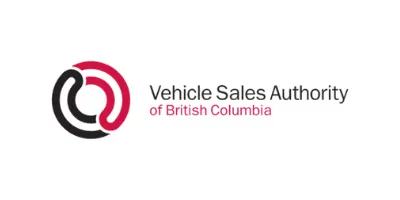
When someone buys a used vehicle in BC, they have some time after the sale closes to back out if they change their mind.
These days, it’s easier than ever to connect with buyers for our used goods. Even so, selling a big-ticket item like a vehicle can feel daunting. But it doesn’t have to. Get a handle on your rights as a seller, and learn the steps to get ready to sell.
What you should know
When you sell a used vehicle, certain conditions are implied under the law.
You must have the right to sell the vehicle.
The vehicle must be free from any lien the buyer doesn’t know about. (A lien is a legal claim that someone other than the owner has over the vehicle.)
The vehicle must be as described.
The vehicle must be durable for a reasonable period of time.
Together, these conditions are referred to as the legal warranty. They’re established by this law. They apply whether you and the buyer agree to them or not. We explain what the conditions making up the legal warranty mean.
The conditions that the vehicle be as described and reasonably durable can be waived for used goods. But the waiver must be in clear and unambiguous language. It’s likely not enough to advertise the vehicle “as is.” You would need to say explicitly that the legal warranty doesn’t apply, and the buyer would have to agree.
Be alive to whether you need a dealer licence
Under BC law, all motor dealers must apply for a licence with the Vehicle Sales Authority of BC. Anyone who sells more than five vehicles per year is automatically deemed to be a dealer. However, you’re a motor dealer in the eyes of the law if you sell even one vehicle as a business activity — that is, for the purpose of earning income. For more detail, see the VSA’s website.
There are two important legal concepts a buyer can lean on to back out of an agreement to buy a used car: the legal warranty and misrepresentation.
The buyer is protected by the legal warranty
Under BC law, the buyer of a used vehicle is protected by the legal warranty, discussed above. If the legal warranty is breached, this gives the buyer certain rights.
For example, say your ad indicates the car you’re selling comes with new all season tires. Someone takes you up on the offer, only to discover later that the car has summer tires with worn treads. This would likely be a breach of the condition that the car be as described. The buyer would likely be entitled to cancel the agreement, return the car, and request a refund. Or, they could ask for a discount if they still wanted the vehicle.
The buyer is protected from misrepresentation
The buyer of a used vehicle is also protected from misrepresentations about the vehicle. That’s when the seller tells the buyer something about the vehicle that isn’t true.
To show misrepresentation, the buyer needs to show that:
you (the seller) made a representation that was untrue or misleading,
you knew — or should have known — that the representation was untrue or misleading, and
the buyer relied on the misrepresentation in buying the vehicle.
Pleading ignorance won’t get you off the hook. If you were reckless in making the representation, or didn’t take reasonable care to ensure it was accurate, that can be enough to make it misrepresentation. Here’s the bottom line: Don’t tell potential buyers something about the vehicle unless you’re sure it’s true.
We explain the options available to a buyer when there’s been misrepresentation or a breach of the legal warranty.
There are a number of situations where the buyer is out of luck if they want out of the agreement after the sale has closed. The buyer isn’t entitled to anything if:
They’re just unhappy about how much they paid, or they change their mind. (In BC, there’s no cooling-off period for the buyer once they buy a used vehicle.)
They inspected the vehicle and should have spotted the problem. The legal test is whether the average person would have noticed it.
They were told about the problem when they bought the vehicle and someone fully explained what it meant.
They caused the problem.
To cover your bases, follow the steps below, under get ready to sell.
“Initially, I planned to sell my car on Marketplace. I use it to sell other stuff pretty often, so I figured it’d be a cinch. I got plenty of offers, but dealing with all the potential buyers started to feel like a fulltime job. So I decided to put it into someone else’s hands — I reached out to an online dealer. Their fees meant I didn’t pocket as much for the car, but it was worth it. My car sold within a week!”
– Jeremiah, Gibsons, BC

When looking to sell your used vehicle, you have the option of selling to a dealership or to a private buyer. Let’s consider the pros and cons of each.
Selling to a dealership
Generally, the process of selling your used vehicle to a dealership is straightforward. The dealer will examine the vehicle and make you an offer if they’re interested. Any costs to get it ready for resale (say, to repair dents or clean the upholstery) will be deducted from their offer.
Usually, you won’t get as high a price for your vehicle as you would selling privately. On the flip side, you avoid the headaches associated with selling privately (like advertising and negotiating with buyers).
The guidance below focuses on selling to a private buyer, but much of it applies to dealer sales as well.
You can sell through an online dealer
There are several online used car dealers operating in BC (for example, Autozen and Carooga). These platforms operate much like an in-person dealership. Typically, a representative will come to inspect the vehicle, estimate its worth, then put it out for bid to get the best price. They usually handle the paperwork, payment, and delivery.
Selling privately
One benefit of selling to a private buyer is control. You set the price. You can list it for what you think it’s worth, rather than what the dealer tells you it is. The downside is that you have a lot more responsibility. You’re in charge of marketing your vehicle, making sure you comply with provincial regulations, and arranging for payment.
Having an unpaid loan on your vehicle doesn’t prevent you from putting it up for sale. If you’re in this situation, you have a couple of options.
You can sell your vehicle and pay off the loan with the proceeds
Money you get from the sale can be used to retire the loan. Keep in mind that BC law requires a used vehicle to be free from any lien the buyer doesn’t know about. Most car loans involve a lien being placed on the vehicle. If there’s still one on yours, you’ll need to tell the buyer about it before the sale.
Be direct and honest. Explain your plan to pay off the loan immediately after the transaction. You can offer to bring the buyer to the lender with you and have the debt cleared in front of them. Consider saying you’ll provide a CARFAX report after the sale closes, to show there’s no longer an outstanding debt registered against the vehicle.
You can pay off the loan before selling
Alternatively, you can clear the debt before you sell. If you can’t cover it from your savings, you can take out a low-interest credit card or personal loan. This could be a good option if you can get a rate that’s lower than your existing car loan. Just be sure you can make the minimum payments (and avoid payday loans!).
Get ready to sell
The first step in putting your vehicle up for sale is deciding on a price. Sites like Canadian Black Book, AutoTrader and CARFAX will give you a good ballpark estimate. Look for vehicles of the same make and model, similar in condition and with roughly the same mileage.
Check the market to see what similar vehicles are selling for. Browse sites like Used.ca and Facebook Marketplace. If you notice a lot of vehicles like yours for sale, it may be worth waiting to list until there are fewer on the market.
Make sure you have the paperwork you’ll need to complete the sale. This includes:
your insurance and original vehicle registration
Other documents, while not strictly required, can make for a faster and simpler sale:
your ID
an inspection report showing that your vehicle meets BC safety standards (here’s a list of inspection facilities)
maintenance records, to show that you took care of your vehicle (for example, receipts for oil changes and repairs)
To get the best offer for your vehicle, you want to attract as many potential buyers as possible. Here are some steps you can take to make your vehicle stand out.
Give your vehicle a facelift
Nothing makes your car look better than a good wash. Get it as close to spotless as possible. Pay particular attention to the headlights and the wheels and rims. Don’t neglect the interior. Clear any gunk from the seats, floormats, and other nooks and crannies. A new air freshener is never a bad idea.
Do basic maintenance
Savvy buyers will be impressed if you go the extra mile. Get an oil change and top up your vehicle’s coolant levels. Make sure the air filter is working, and change it if needed. Check your tire pressure and tread depth. Make sure all the turn signals and headlights are working properly.
Take good photos
Once your vehicle is in top shape, it’s time for the photoshoot. Wait for a clear, sunny day. Try to take photos that emphasize your vehicle’s best features. Take lots of photos, and play around with your camera or phone’s settings. Look for a plain backdrop, without anything to distract from the vehicle.
Take care not to misrepresent your vehicle
In BC, buyers are protected from misrepresentations. That’s when a seller tells the buyer something about the vehicle that isn’t true in order to get them to buy it. So it’s important to be honest in your ad and in your conversations with potential buyers.
Once you’ve got some pictures you’re happy with, it’s time to list your vehicle. Start by writing a compelling ad. Include the important details like the make, model, year, and number of kilometres. Describe any issues the vehicle has that a buyer would want to know about.
Post to popular online marketplaces like Craigslist, Facebook Marketplace, or Used.ca. Crossposting to multiple sites ensures you reach the highest number of shoppers. You can also post your vehicle to online bidding sites, like Carity or Autozen.
Many sellers find negotiating over the price to be the most stressful part of the process. (Especially for those of us without great bargaining skills.) It helps if you’ve set an accurate and fair price from the start. (See step one, above.)
Don’t go into the negotiation with a specific number in mind. Rather, decide on a price range you’d be happy with. If the buyer’s offer comes in too low, you can always make a counteroffer. These tips for negotiating a car’s price, while aimed at the buyer, apply equally for the seller.
There’s no cooling-off period
In BC, there’s no cooling-off period once someone enters an agreement to buy a used vehicle. That means the buyer won’t be able to cancel the agreement just because they changed their mind or are unhappy about how much they paid.
Invite interested buyers to view the vehicle at your home or a public place. If they want to take a test drive, consider tagging along to explain the main features and make sure there aren’t any problems. If they go alone, make sure you get a photo of their driver’s licence. You can also ask them to leave some collateral with you.
Ensure they inspect the vehicle thoroughly. If they want a third party inspection, they should pay for it. Consider having them sign an agreement saying they completed an inspection and are satisfied with the condition of the vehicle.
Put the terms of your deal into a written agreement. Include the details around payment and when the buyer will take possession. If the sale is conditional on something happening (for example, the buyer doing a lien check), write that in.
We’ve got a tool to help you build an agreement.
The next step
Ready to sell?
If you’ve got a buyer lined up and you’re ready to sell your vehicle, we walk you through what’s involved in closing the deal.
Who can help

Vehicle Sales Authority of BC
Oversees retail car sales and helps resolve complaints with licensed car dealers.

